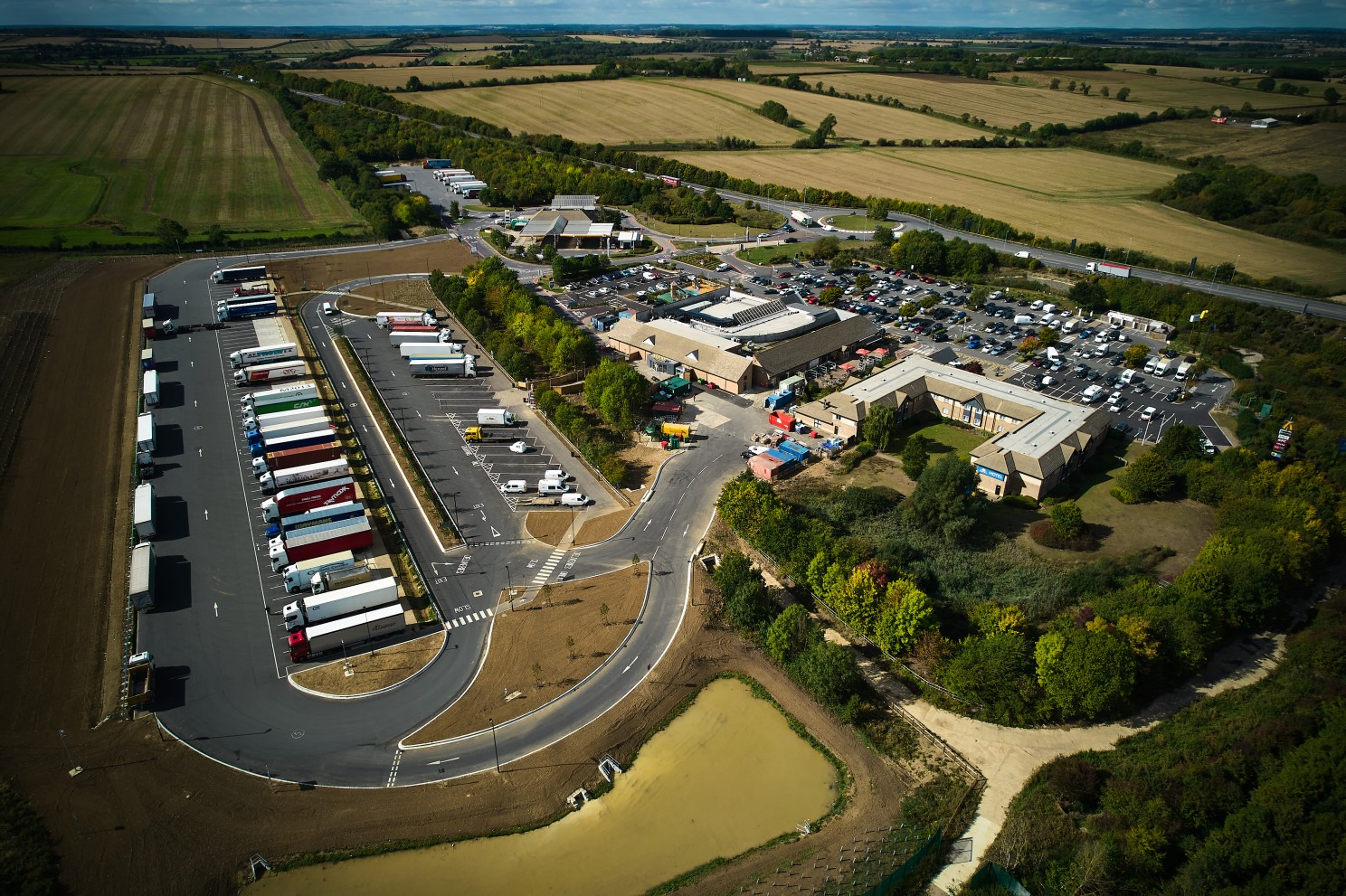
Josh Cousens
Una asociación estratégica: El enfoque de SNAP y Extra sobre el aparcamiento de camiones
Creado: 01/08/2024
•
Actualizado: 13/08/2024
El director Ross Mendenhall explica cómo SNAP ha ayudado a Extra Motorway Service Area (MSA) a aumentar el crecimiento de los ingresos en toda su red hasta un 8% anual desde que empezamos a trabajar juntos en 2011.
"Una ventaja clave para nosotros es que la base de clientes de SNAP está en constante expansión, lo que nos permite llegar a 30.000 clientes potenciales más al año", afirma Ross Mendenhall, que utiliza SNAP para maximizar el negocio de aparcamiento de camiones de Extra.
Ross explica su función en Extra: "Superviso nuestra red de ocho MSA en toda Inglaterra, asegurándome de que contamos con el mejor entorno y los mejores procesos de trabajo, lo que nos permite ofrecer la máxima satisfacción al cliente, y trabajo conjuntamente con nuestro director general para garantizar que nos centramos en nuestras ambiciones de crecimiento.
"También trabajo en estrecha colaboración con nuestros proveedores y marcas inquilinas para garantizar que ofrecemos la mejor experiencia posible a todos los que visitan nuestras MSA".
Áreas de servicio de autopistas adicionales
Tras abrir su primer centro en Cambridge en 2000, Extra es ahora uno de los mayores operadores de servicios de autopista del Reino Unido. En la última encuesta Transport Focus Motorway Service Users, Extra fue elegida el operador número uno en satisfacción del cliente en el Reino Unido.
En palabras de Ross: "Uno de los pilares de nuestra filosofía empresarial es nuestro compromiso de "ir más allá" para ofrecer experiencias magníficas a todos nuestros visitantes.
"En particular, nos enorgullecemos de ofrecer una amplia gama de algunas de las marcas de comida y bebida favoritas del Reino Unido, pintorescos espacios al aire libre completos con zonas de paseo para perros y áreas de juego para niños, así como instalaciones seguras, limpias y de alta calidad para el disfrute de todos."
En 2023, hubo 260.066 estacionamientos SNAP en Áreas de Servicio Extra de Autopistas.

Enter SNAP
Tras empezar a trabajar con SNAP en 2011, Ross explica cómo la asociación ha ayudado a Extra a hacer crecer su servicio de aparcamiento de camiones. "SNAP nos ayuda a comunicar nuestros servicios clave a los conductores de camiones y a las flotas, ofreciendo visibilidad de nuestras capacidades de aparcamiento, combustible y lavado.
"Estamos comprometidos a impulsar el índice de satisfacción de los conductores de camiones que paran con nosotros y formar parte de la red SNAP nos permite hacer precisamente esto. A través de la aplicación, podemos aumentar nuestras asociaciones y ventas orgánicas ofreciendo a los clientes una herramienta eficaz para obtener más información sobre nuestras instalaciones, incluyendo cómo podemos hacer que su estancia sea agradable, relajante y segura".
¿Cómo fue el proceso de configuración?
Queríamos averiguar si hubo complicaciones en las primeras etapas de la relación.
Ross afirma: "Fue muy sencillo. El equipo de SNAP estuvo a nuestra disposición para responder a cualquier pregunta que pudiéramos tener, e incluso una vez finalizada la instalación, estuvieron encantados de escuchar nuestros comentarios sobre cómo se podría seguir mejorando el sistema para satisfacer mejor nuestras necesidades."
Crecimiento de los ingresos
Preguntamos a Ross si SNAP ha ayudado a Extra a aumentar sus ingresos:
"Nuestra asociación con SNAP nos ha ayudado a aumentar de forma constante nuestros ingresos, que se han incrementado un 8% interanual, con un crecimiento de las transacciones del 2%.
"Nuestros servicios de Cambridge y Peterborough han experimentado la mayor mejora interanual, con un 11% y un 12%. Además, nuestros servicios de Peterborough, Leeds y Cambridge están ahora al 100% de ocupación".

Acceso y seguridad SNAP
Después de trabajar juntos con éxito durante varios años, Extra nos preguntó en 2018 si podíamos ayudar a mejorar sus instalaciones de seguridad.
"A lo largo de los años hemos reforzado nuestra colaboración con SNAP, invirtiendo en sistemas de vídeovigilancia y tecnología ANPR para garantizar la máxima seguridad.
"La instalación de tecnologías de seguridad en nuestros ocho centros nos ha ayudado a proteger nuestros ingresos, garantizando que cada vehículo paga por la duración correcta de su estancia.
"El impacto de trabajar con SNAP Access & Security fue casi inmediato, con un aumento registrado en los ingresos generados por el aparcamiento de alrededor del 20% desde la puesta en marcha.
Además, dado que la seguridad es una de las prioridades de los camioneros cuando se detienen durante un periodo prolongado, nos complace contribuir a que su estancia sea más agradable asegurándoles que contamos con medidas exhaustivas para minimizar el riesgo de robo".
"Tener acceso a los paneles de inteligencia empresarial de SNAP también significa que podemos supervisar los datos en tiempo real, lo que nos permite ofrecer la mejor experiencia de usuario posible", afirma Ross.
The best bit
Para concluir la entrevista, quisimos preguntarle a Ross qué era para él lo mejor de trabajar con SNAP:
"Un éxito clave para nosotros es el impacto en la eficiencia del personal. La introducción del sistema ANPR, combinado con los terminales de pago, ofrece a los conductores una opción de autoservicio que permite al personal centrarse en otras tareas clave, como la limpieza, el mantenimiento y la atención al cliente.
"La flexibilidad que ofrecen los terminales de pago es también un gran atractivo: los conductores pueden utilizar los terminales de pago en 15 idiomas, lo que mejora la experiencia del cliente y reduce los problemas de barreras lingüísticas."
Si desea más información sobre los socios de servicios Extra de la red SNAP, visite SNAP Map hoy mismo. Si ofrece aparcamientos para camiones y desea unirse a la red SNAP, infórmese aquí.



